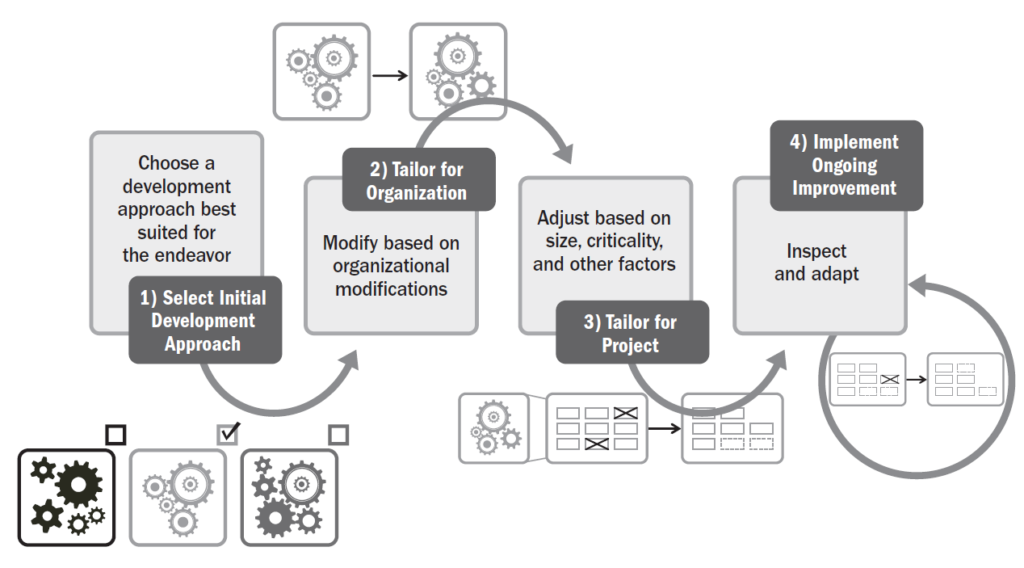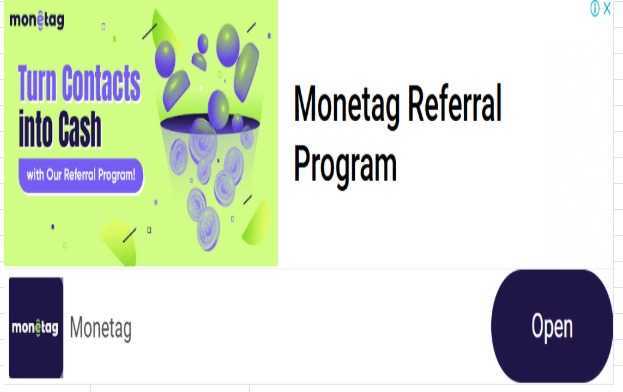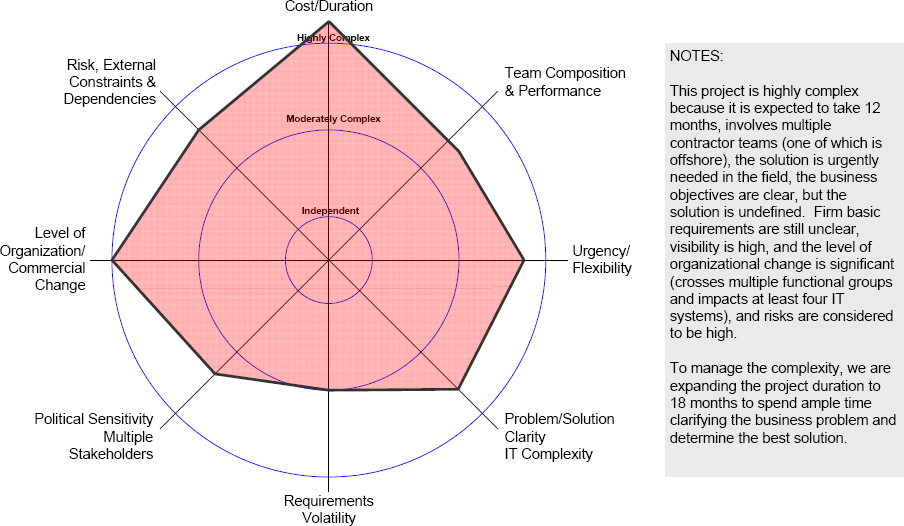Introduction
The modern project landscape is evolving rapidly. From cutting-edge technology to globalized teams and fast-changing stakeholder needs, today’s projects are no longer simple undertakings. One of the most significant challenges faced by project managers is complexity. As the PMI PMBOK® Guide – Seventh Edition outlines, understanding, navigating, and managing complexity is critical to project success. This is where complexity models play a vital role.
This blog explores the concept of complexity in project management, the frameworks used to evaluate it, and how the PMBOK Guide encourages tailoring based on complexity. With real-world examples and practical strategies, this guide will help project professionals make sense of complexity and adopt the right models to mitigate risks and maximize success.
What is Project Complexity?
Project complexity refers to the degree of difficulty in understanding, predicting, and managing a project’s structure, environment, and interactions. It is not solely about project size, cost, or duration. Rather, it encompasses a broader scope, including:
- Interdependencies
- Ambiguity and uncertainty
- Novelty or innovation
- Stakeholder diversity
- Technical challenges
- Regulatory and compliance requirements
In the PMBOK Guide (7th Edition), complexity is seen as an influencing factor across all performance domains, from stakeholder engagement and delivery to uncertainty and project work.
Importance of Complexity Models
Understanding and managing complexity is essential for multiple reasons:
- Improves Decision Making: Helps project managers choose appropriate methodologies.
- Enables Better Planning: Informs risk mitigation, resource allocation, and governance.
- Supports Tailoring: Allows customization of tools, techniques, and life cycles.
- Enhances Communication: Clarifies expectations among stakeholders.
- Drives Project Success: Proactively managing complexity improves outcomes.
The PMBOK Guide doesn’t mandate a specific complexity model. Instead, it supports the use of various models based on the project environment and encourages project managers to adopt a tailored approach.
Dimensions of Project Complexity (PMBOK-Aligned)
PMBOK identifies that complexity arises across multiple dimensions. Recognizing and categorizing these can help in selecting the right model and mitigation approach:
1. Structural Complexity
- Arises from project size, scale, and interdependencies.
- Examples:
- Multiple workstreams
- Interconnected systems
- External vendor dependencies
2. Technical Complexity
- Related to the technologies involved and their maturity.
- Examples:
- Use of AI, IoT, or cloud computing
- Lack of technical expertise in new tools
3. Organizational Complexity
- Involves internal structures, processes, and reporting lines.
- Examples:
- Matrixed organizations
- Conflicting department priorities
4. Stakeholder Complexity
- Diversity in stakeholder interests, influence, and power.
- Examples:
- Politically sensitive projects
- International stakeholder groups
5. Dynamic Complexity
- Arises from changes and uncertainty in the external environment.
- Examples:
- Market volatility
- Policy or regulatory shifts
Key Complexity Models in Project Management
Here are widely recognized models and frameworks that align with the PMBOK’s principles and performance domains.
1. Cynefin Framework (Dave Snowden)
One of the most powerful models for understanding complexity, the Cynefin Framework categorizes problems into five domains:
- Obvious: Clear cause and effect, use best practices.
- Complicated: Cause and effect exist but require expert analysis.
- Complex: No clear answers; patterns emerge over time.
- Chaotic: No relationship between cause and effect; act to stabilize.
- Disorder: Unknown context.
Application:
- Use at the initiation phase to determine whether Agile, Hybrid, or Predictive approaches are suitable.
- In complex domains, experimentation and learning are emphasized over rigid plans.
2. Stacey Matrix (Ralph Stacey)
This matrix classifies projects based on:
- Certainty of technology
- Agreement on requirements
It breaks down projects into zones:
- Simple
- Complicated
- Complex
- Chaotic
Application:
- If both technology and agreement are low (Complex), Agile or iterative methods are preferred.
- If both are high (Simple), traditional methods work well.
3. VUCA Model
VUCA stands for:
- Volatility
- Uncertainty
- Complexity
- Ambiguity
It describes the challenges of modern projects and supports leadership strategies for adapting to a rapidly changing environment.
Application:
- Helps create more resilient strategies.
- Used to inform communication plans and stakeholder engagement.
4. Remington and Pollack’s Complexity Types
This academic model outlines four dimensions:
- Structural: Size and interconnections.
- Technical: Complexity of deliverables.
- Directional: Uncertainty in goals.
- Temporal: Schedule pressures and change over time.
Application:
- Used to create a Complexity Profile of the project.
- Helps in project governance and selecting the right leadership style.
5. System of Systems (SoS) Thinking
Complex projects often function as systems within systems. SoS thinking views projects as interrelated systems, emphasizing:
- Emergent behavior
- Dynamic feedback loops
- Multiple subsystems and actors
Application:
- Used in large infrastructure, defense, or IT programs.
- Encourages cross-disciplinary integration.
Complexity in PMBOK Guide’s Performance Domains
Complexity cuts across all eight performance domains in PMBOK (7th Edition):
Performance Domain | Complexity Considerations |
Stakeholders | Diversity of perspectives and levels of influence |
Team | Distributed teams, cross-functional collaboration |
Development Approach & Life Cycle | Selection based on project uncertainty and complexity |
Planning | Flexibility in scope and schedule plans |
Project Work | Integration of complex interdependent tasks |
Delivery | Managing complex value chains and expectations |
Measurement | Tracking outcomes in volatile environments |
Uncertainty | Adapting to unpredictable change |
Principles in PMBOK for Managing Complexity
Among the 12 PMBOK principles, the following directly support complexity management:
1. Tailor Based on Context
- Choose appropriate models and frameworks for the environment.
2. Navigate Complexity
- Embrace change, uncertainty, and emergent behavior with adaptability.
3. Enable Change to Achieve the Future
- Complex projects often involve transformation; support change.
4. Optimize Risk Responses
- Complex systems introduce nonlinear risks; manage proactively.
Tailoring for Complexity
Tailoring is central to PMBOK 7. To deal with complex projects:
Governance
- Create flexible governance frameworks.
- Assign roles that adapt to change.
Delivery Approach
- Use hybrid approaches that blend predictive and adaptive practices.
- Incorporate design thinking and feedback loops.
Processes and Tools
- Prioritize collaboration tools.
- Use real-time dashboards and automated reporting.
Stakeholder Engagement
- Establish multi-layered communication plans.
- Include stakeholder complexity assessments.
Complexity Assessment Tools
Tools that help evaluate and manage complexity include:
Tool | Purpose |
Complexity Assessment Matrix | Classifies complexity across dimensions |
Dependency Mapping | Visualizes interdependencies and touchpoints |
Stakeholder Onion Diagram | Identifies layers of stakeholder influence |
Cause and Effect Diagrams | Reveals root causes of complexity |
Risk Sensitivity Analysis | Evaluates potential impact of interacting risks |
Case Studies
1. Digital Transformation in Healthcare
A hospital system upgrading its legacy systems to cloud-based EHRs.
- Complexity: Technological (new systems), stakeholder (doctors, patients, insurers), structural (multi-site).
- Approach:
- Used Cynefin Framework for decision-making.
- Applied Agile for software rollout and Predictive for infrastructure.
- Conducted stakeholder engagement workshops.
2. Smart City Project
A municipality introduces smart infrastructure (IoT, energy monitoring, e-governance).
- Complexity: High structural and stakeholder complexity.
- Approach:
- Used System of Systems Thinking.
- Combined predictive (infrastructure) with Agile (software services).
- Layered governance for technology, urban planning, and citizens.
Strategies to Manage Complexity
- Early Complexity Assessment
- Identify complexity drivers during initiation.
- Use structured questionnaires or checklists.
- Engage Adaptive Leadership
- Leaders must embrace ambiguity and facilitate experimentation.
- Continuous Feedback Loops
- Encourage regular retrospectives and course corrections.
- Cross-Functional Teams
- Encourage collaboration among specialists.
- Incremental Delivery
- Break down delivery into manageable releases.
- Scenario Planning
- Prepare for multiple futures to handle uncertainty.
Challenges of Complexity Management
- Cognitive Overload: Too much information can paralyze decision-making.
- Resistance to Change: Stakeholders may resist new models or frameworks.
- Over-Engineering: Trying to solve every possible scenario adds to the problem.
- Lack of Training: Team members may not understand complexity models.
- Underestimating Interdependencies: Leads to cascading failures.
Future of Complexity Models in PM
As projects become more digital, integrated, and global, complexity models will continue to evolve. Future trends include:
- AI-Driven Complexity Analysis: Predict patterns using data analytics.
- Dynamic Modeling Tools: Simulate systems and forecast behavior.
- Ethical Complexity: Managing AI, privacy, and social impact considerations.
- Human-Centric Design: Placing people at the center of complexity solutions.
Conclusion
Complexity is an inevitable aspect of modern project management. The PMI PMBOK Guide (7th Edition) embraces this by promoting principles, tailoring, and value delivery over rigid processes. Complexity models such as the Cynefin Framework, Stacey Matrix, VUCA, and others provide structured ways to navigate unpredictability and interconnectedness.
Project managers must understand the dimensions of complexity, conduct early assessments, choose the right model or framework, and tailor their approach to the unique needs of the project. Ultimately, success in complex environments hinges on adaptive thinking, flexible tools, and a human-centric approach to leadership.



